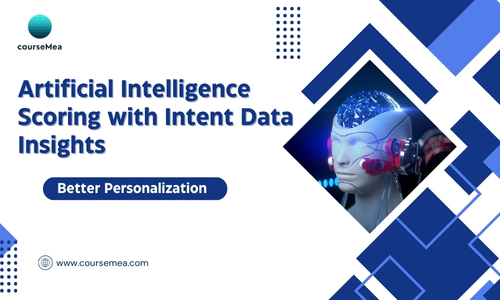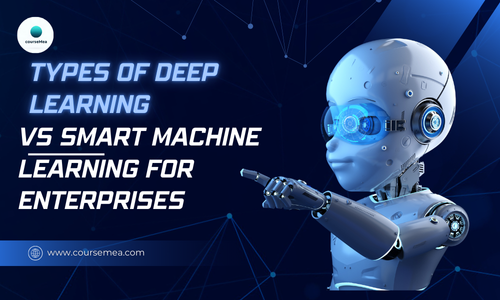Advantages and Disadvantages of Deep Learning in AI Tech Artificial intelligence (AI) has benefited significantly from deep learning as a subfield of machine learning because this technology allows machines to analyse huge amounts of data autonomously. These technological systems use deep learning as their central support framework because of its application in driverless vehicles and both medical imaging systems and voice-controlled helpers.
The processing method of deep learning depends on Artificial Neural Networks (ANNS), which create multiple layers and become Deep Neural Networks (DNNS). These networks function by replicating the information processing method that occurs in human brains. Deep learning stands apart from standard machine learning because it enables automatic pattern discovery from unorganised data types, including images and speech, as well as text.
Image: Artificial Neural Networks (ANNs)
Table of Contents
ToggleAdvantages and Disadvantages of Deep Learning
Source: Pinterest
Image: Deep Neural Networks (DNNs).
Source: Pinterest
The many progressions in artificial intelligence from deep learning systems create practical difficulties because of this approach. The research examines how deep learning benefits and drawbacks work in combination to affect production sectors while showing its operational boundaries.
Overview of Deep Learning
The subset of machine learning known as deep learning enables deep neural networks to examine and process data through its systems. Forward propagation through the network demonstrates progressive comprehension of deep relationships within data that results in accurate predictions.
Key Characteristics of Deep Learning
The neural network architecture applies simple pattern recognition to lower layers at the same time it applies complex pattern recognition to higher layers for object recognition in images.
The models perform end-to-end learning without requiring human intervention for feature engineering because they extract information directly from unprocessed data.
The system operates best with big datasets matched against substantial computing capacity.
The advancements in natural language processing (NLP) along with computer vision and speech recognition originated from deep learning techniques. The system faces major obstacles because it needs large amounts of data combined with powerful computational resources.
Source: Pinterest
Advantages of Deep Learning
- High accuracy in complex tasks
Advantages and Disadvantages of Deep learning technology deliver results of human quality for multistage operations, including image recognition and speech analysis, together with language translation duties. For example, DeepMind AlphaFold under Google attained a remarkable breakthrough by precisely solving the biological puzzle of protein folding and created innovative breakthroughs in both drug discovery and molecular biology.
- Automated feature engineering
The attributes discovery process in deep learning models proceeds without human involvement because these systems extract appropriate features from unprocessed information. The process automatically eliminates the requirement of human involvement for selecting data attributes. For example, engineers must manually specify features for eye shape and nose width together with mouth position when using traditional models in facial recognition systems. Through training the deep learning model acquires features from raw data automatically.
- Scalability with big data
Deep learning algorithms show maximum efficiency when handled with data containing extensive volume. The models enhance their performance as data volumes increase which makes them suitable for processing big data. Example: Deep learning enables the tech titans Google, Amazon and Facebook to find patterns in enormous datasets that they employ for search ranking services and recommendation service generation as well as user behavior monitoring.
- Versatility across industries
Deep learning models serve businesses in all major sectors such as healthcare and finance and automotive and entertainment. Examples: Medical scans benefit from deep learning technology which helps identify cancer instances.
The AI model IBM Watson enables doctors to process patient information before providing treatment recommendations.
Deep learning enables financial institutions to perform fraud detection while helping with risk assessment as well as algorithmic trading operations.
Deep learning enables Tesla Autopilot to function through self-driving car systems that detect pedestrians along with road signs and obstacles.
Spotify together with Netflix employ deep learning framework-based solutions for content recommendations across their services.
- Handling unstructured data
Deep learning obtains excellent performance when analyzing unstructured information including pictures along with videos as well as natural language texts. Deep learning technology provides efficient data extraction from non-tabular multimedia information which traditional methods are unable to handle effectively. For example, Facebook achieves automatic people tagging in photos through their deep learning algorithm which detects human faces.
Disadvantages of Deep Learning
- High computational cost
The implementation of deep learning models demands powerful GPUs or TPUs together with considerable energy input for training massive models. High computational expenses restrict access for researchers alongside small businesses since the costs become unmanageable. For example, The OpenAI language model GPT-4 needs millions of dollars to perform its computational training operations.
- Requires large datasets
The training requirements for deep learning models exceed the capacity of small datasets since they need large amounts of labeled data. The process of obtaining and annotating data requires both extensive amounts of time and high financial costs. For example, The precise detection of diseases by medical AI applications depends on thousands of annotated X-rays but finding enough X-rays to train the system becomes difficult in rare medical conditions.
- Lack of transparency (black-box problem)
Deep learning models receive criticism because their operations remain difficult to understand. Deep learning approaches function as opaque systems known as black boxes because their analytic approach remains hidden from view thus preventing users from understanding system judgments. For instance, AI-driven loan decisions remain unexplainable to financial regulators because of this which creates trust problems in the sector.
- Vulnerability to adversarial attacks
Small modifications known as adversarial inputs can easily fool deep learning models to make wrong predictions because these systems demonstrate high sensitivity to such attacks. For instance, the introduction of minuscule noise to a stop sign caused AI systems to misunderstand it as a speed limit sign which threatens autonomous vehicle safety.
- Ethical concerns and bias
The learning process of deep models receives biases from training datasets that result in discriminatory outcomes. The use of deep learning models produces multiple ethical problems across three domains: privacy protection, surveillance system operations and clear decision-making visibility. For instance, the hiring systems operated by AI show discrimination towards women and minorities because their training data contains biases.
Conclusion
The AI domain underwent a revolution through deep learning because it delivers high accuracy performance together with automatic feature learning while competing well regarding scalability and adaptability. These systems present multiple difficulties which include expensive processing demands along with dependency on data and unclear operations and security dangers and ethical problems.
Advancement of deep learning research aims to eliminate biases and boost interpretability and achieve higher energy efficiency in deep learning processes. The success of deep learning in the future requires developers to manage its strong capabilities along with ethical guidelines for AI development.




